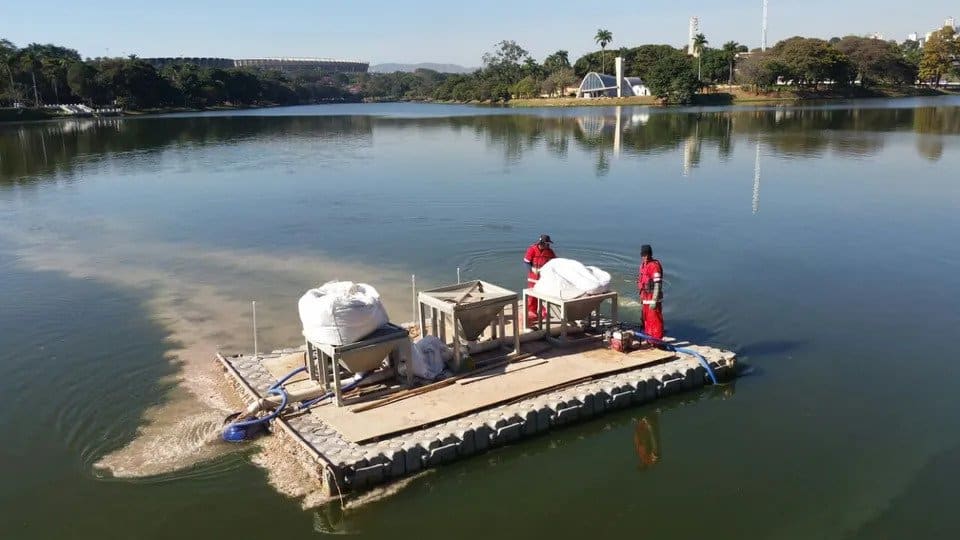20 Oct, 2020
Promising Water Quality Improvements after Four Years of Regular Phoslock Applications at Lake Pampulha, Brazil
After four years of regular Phoslock applications, Lake Pampulha is showing promising water quality improvements.
Lake Pampulha is a tourist hotspot which lies in southeastern Brazil within the urban area of one of Brazil’s largest cities, Belo Horizonte. Since the 1970s, urbanization has led to a decline in its water quality making the system very nutrient-rich. This UNESCO world heritage site has experienced regular cyanobacterial blooms since the 1980s due to nutrients entering the system. The lake was historically used as a water supply reservoir for the City of Belo Horizonte, however the use of the reservoir for potable water supply was stopped some years ago due to the ongoing issues with cyanobacterial blooms.

To improve the water quality in the reservoir, in April 2016, the local municipality implemented a treatment program which comprised of regular Phoslock applications. Approximately 1,800 tonnes of Phoslock have been applied to the lake since the commencement of the treatment
According to a recent publication by researchers from the University of Minas Gerais (Barçante et al., 2020), total phosphorus “showed a trend of decreasing concentration with significant change especially in the second year of treatment, indicating a positive effect”.
Another positive outcome reported by Barçante et al., (2020) from the application was that, “by the end of the second year until the interruption of the treatment, cyanobacteria dominance was significantly reduced and replaced by a more diverse phytoplankton community rarely seen in this environment”. By the end of the 21-months, “the number of species groups other than cyanobacteria increased, characterizing more than 80% of the total species”. Thanks to a diminished cyanobacteria biomass, other phytoplankton species were able to become established post- treatment.
Despite the early positive results, Pampulha reservoir remains heavily impacted due to the intense urbanization in its catchment. Consequently, the system still receives high concentrations of phosphorus from external inputs and as a result, the improvements in water quality require continued applications in order to be maintained. Thanks to the foresight of the City of Belo Horizonte, Phoslock applications continue, however actions are also being undertaken in an attempt to reduce the high external nutrient load.
Source of information: Barçante et al., 2020. Cyanobacteria dynamics and phytoplankton species richness as a measure of waterbody recovery: Response to phosphorus removal treatment in a tropical eutrophic reservoir. Ecological Indicators, 117, 106702. (https://doi.org/10.1016/j.ecolind.2020.106702)